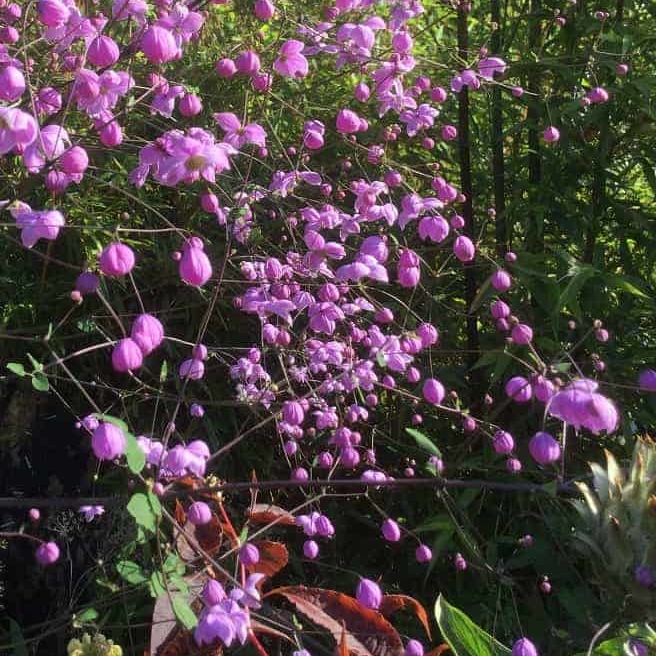Ensuring that you include plants in your garden that have a very strong form is an essential design principle. Without form a garden can lack interest. Especially during the winter – but also unity and cohesion as there is little to tie everything together or create a backdrop or contrast for more ephemeral plants.
Formal gardens tend to rely on structure to create strong patterns, repetition and to lead the eye through the garden. This is often achieved in a minimalistic way using a limited range of plant species. Usually yew or box and minimal colour. Topiary is an obvious choice and can be trained into any number of shapes. It is neat and crisp, and lends itself to formality. However, this does not mean to say that more informal gardens do not need plants with a strong form. Even topiary can be used to create contrast between the strong, clean lines and the softer planting of herbaceous plants and ornamental grasses.
Harmony can also be achieved by repeating form but using different plants. Spikey and linear leaves for example Phormium, day lilies and ornamental grasses. Contrast and interest can be achieved by the juxtaposition of plants with different forms such as fastigiated conifers rising out of a low spreading (prostrate plant) or neighbouring softer rounded forms.
During the 16th century Topiary became very popular throughout Europe. Many good examples still exist in large country estates where the dense forms often take the place of hard landscaping features and form divisions. Decorative folly’s and garden rooms. On a smaller scale topiary can be used as ‘punctuation’ in a garden. It is useful for linking different areas and leading the eye around a space.
Topiary however requires maintenance to keep the crisp shapes. It is worth considering plants that have naturally strong forms such as the fastigiate (tall, columnar) and Juniperus scopulorum ‘Sky Rocket’. The weeping copper beech Fagus sylvatica ‘Purpurea Pendula’, the striking conical Abies koriana with silvery backed needles and upright purple cones.
Small plants suitable for urban gardens include Berberis thunbergii f. atropurpurea ‘Bagatelle’ which is compact and retains a dwarf, rounded shape without the need for pruning. It is deciduous so winter structure is less dramatic. Its red foliage and deep crimson autumn colour give plenty of structure throughout the growing season. Another good choice is the weeping rosemary Rosmarinus officinalis ‘Prostratus’. (prostrate meaning growing almost horizontally) the weeping rosemary spills strikingly over walls and tall containers.
Phormium cultivars are good, reliable performers that have a strong architectural look with their evergreen linear leaves. Some can get quite large however. Choose one of the smaller cultivars such as ‘Flamingo’, ‘Tom Thumb’ and ‘Bronze Baby’
Caroline Wright
Caroline brings decades of horticultural experience, both practical and theoretical. Having lectured at Brackenhurst Horticultural University for many years, Caroline has now relocated to France and is following her passion for growing plants and teaching. Caroline and her husband Paul run the plant nursery, propagating all of the plants themselves and lead a wide selection of fun and interactive horticultural and craft based courses.



